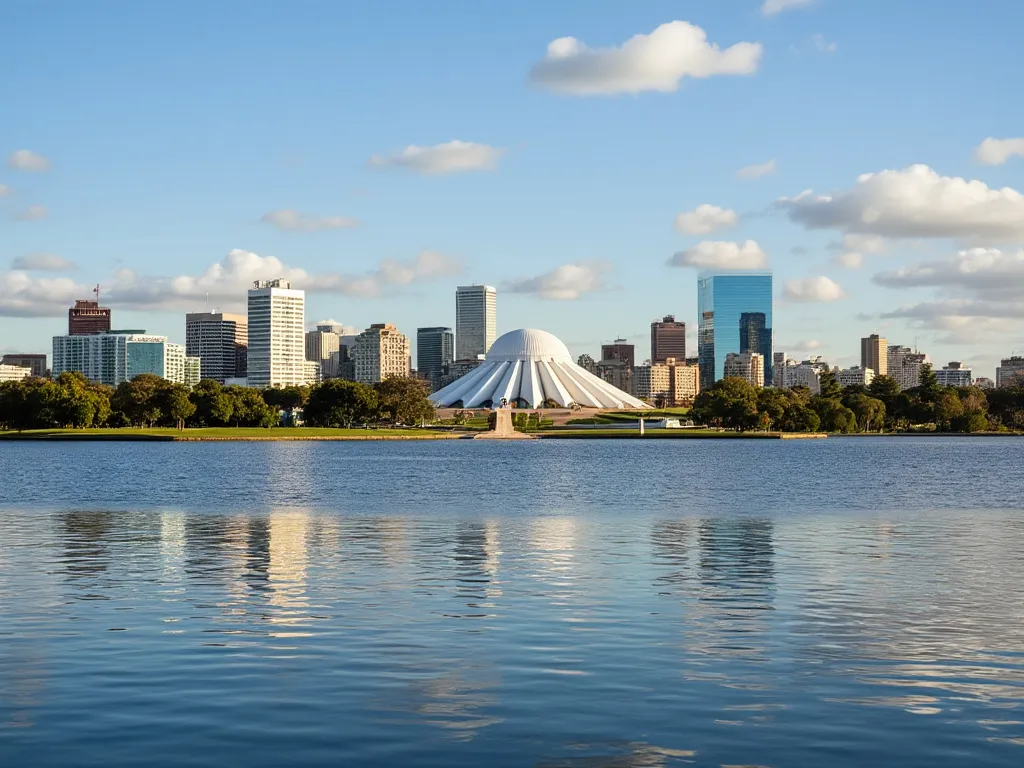
Canberra is the capital city of Australia, located in the Australian Capital Territory (ACT). It is a planned city, designed by American architect Walter Burley Griffin in 1912, and was officially opened on March 12, 1927. Canberra is a city of significant cultural, historical, and natural importance, known for its unique blend of modern architecture, museums, galleries, and national institutions.
Canberra information
| Country | 🇦🇺 Australia |
| City Population | 415,800 (2020 estimate) |
| City Coordinates | 35.2833° S, 149.1281° E |
| City Area | 814.2 km² (314.4 sq mi) |
| Climate | Oceanic (Köppen: Cfb) |
| Language | English |
| Currency | Australian dollar (AUD) |
| Time zone | Australian Eastern Standard Time (AEST) (UTC+10) |
| Proximity to other major cities | Located approximately 280 km (174 mi) southwest of Sydney and 670 km (416 mi) northeast of Melbourne |
Interesting Facts and Tourist Attractions in Canberra
Interesting Facts About Canberra
- Canberra is home to the largest mosque in the Southern Hemisphere.
- The city has more bicycles than cars.
- Canberra is home to the National Zoo and Aquarium, which is home to over 500 animals.
Tourist Attractions in Canberra
- Australian War Memorial
- National Museum of Australia
- Australian Parliament House
- Black Mountain Tower (Telstra Tower)
- Canberra Zoo and Aquarium
Historical Background of Canberra
The area now known as Canberra has been inhabited by indigenous peoples for at least 21,000 years. The modern city was founded in 1908, after a long search for a site for the national capital. The city was named after the Aboriginal word "Kamberra", meaning "meeting place". During World War II, Canberra played a significant role as a center for military planning and strategy.
Geographical Location of Canberra
Canberra is situated in the southeastern part of Australia, approximately 280 km (174 mi) southwest of Sydney and 670 km (416 mi) northeast of Melbourne. The city is nestled in the Canberra Valley, surrounded by the Molonglo River and the Brindabella Ranges. The climate is oceanic, with mild winters and warm summers.
Cultural Significance of Canberra
Canberra is home to many national institutions, including the Australian Parliament, the High Court of Australia, and the National Museum of Australia. The city is also known for its vibrant cultural scene, with numerous theaters, galleries, and festivals throughout the year. The Canberra Symphony Orchestra and the Canberra Theatre Company are just two examples of the city's thriving arts scene.
Economic Importance of Canberra
Canberra is a major economic center, with a strong focus on public administration, education, and healthcare. The city is home to many government departments and agencies, as well as several major universities, including the Australian National University (ANU) and the University of Canberra. Tourism is also an important sector, with visitors drawn to the city's cultural attractions and natural beauty.
Conclusion on Canberra
Canberra is a city of great cultural, historical, and natural significance, offering something for everyone. From its vibrant arts scene to its stunning natural beauty, Canberra is a must-visit destination for anyone interested in exploring the best of Australia.
 Caracas
Caracas
 Castries
Castries
 Buenos Aires
Buenos Aires
 Cairo
Cairo